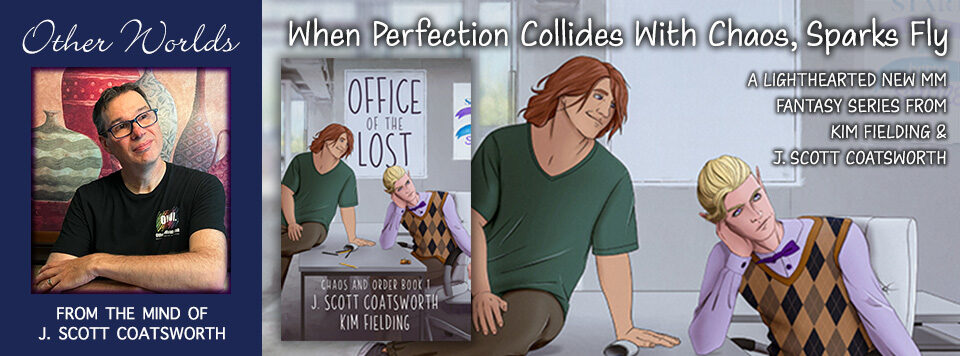
Publishing used to be simple. You either got a traditional publisher, who worked with you to edit the book, hired a cover designer, got everything into ship-shape, and then sent it off to a printer for 3,000, 5,000, 50,000, or even a million copies (if your last name happened to be Asimov or King or Collins). Then you sat back and waited for the royalties to roll in.
Or you did all that yourself, and hired a local Kinkos or “vanity press” to print up your own copies, which went into the trunk of your car for you to schlep around to local bookstores, signings, and libraries in the hopes of finding am audience.
Today the options are far more varied – sure, there are still traditional and vanity presses. But we can also publish our own books on dozens of platforms, and even offer them as ongoing (monetized) serials.
But alongside these options, which all somewhat mimic the traditional publishing models, are new ways to market and make money from our books. So I thought I’d detail a few of these here:
Crowdfunding:
The idea behind this one is that you get your book funded in advance (and often with a lot more money than you would be able to put into it alone) by pre-selling it to a large group of people. This is often done by offering special perks depending on how much money each person donates to the cause. Usually everyone gets a book – these can be signed to give them a bit of extra specialness. But you might also design some special swag for participants, or a story distributed only to them, or a poster of one of the characters – the possibilities are just about endless. And the more they give, the better the reward. Kickstarter is probably the most popular platform for this, but there are others.
Pros: You can bring in a fair amount of cash this way, allowing you to create a better product and ensure its financial success before you print a single book. It’s also a good way to generate early word of mouth.
Cons: It can be a lot to manage. Remember those perks I mentioned? Well, someone has to come up with them. And create them. And ship them. And track them to make sure they all get where they are going. There’s also the risk that no one wants to be a part of your fundraiser, and that can be hard on the writer ego.
Email Marketers:
There are a number of services out there that maintain large email lists of readers looking for a bargain, often categorized by genre preference. BookBub is the largest of these, but there are others too. Usually you book a date and discount your book at all vendors to 99¢, and then on that day your title is included in their book blast to the appropriate readers. You make your money from all the folks who buy it through the usual vendors (Amazon is typically the largest share). This works best for book one of a series, where readers can flow through and buy books two, three, etc (often at a less-steep discount).
Pros: It can be a great way to move a lot of books. it’s fairly low effort, and when it works, it can result in a nice fattening of your bank account.
Cons: It’s pay-up-front. I’ve done a few of these – on one, I made five times the cost back in book sales. On another, I actually spent about $300 more than I earned. And there’s no guarantee those folks who bought your book for a buck will read it any time soon and come back for more.
Bundles:
These are groupings of (usually) similar books – same genre, etc – that are either sold together as a bunch or given away en masse. In the former case, there’s usually a discount involved, and folks pay for the whole bundle and then the authors split the profits – examples of this are StoryBundle (who works with curators who suggest and then create the bundles) and HumbleBundle (who creates their own bundle concepts and then approaches authors to participate. Then there are free bundles – these are ton through sites like Book Funnel and Prolific Works, and readers choose which of the free books to download. If you’re in sci-fi or fantasy, SFWA has a great StoryBundle plan that’s open to members and non-members alike.
Pros: These can be a great way to get your book out to a bunch of readers, and there’s no out-of-pocket costs, as there is with an email marketer. I only have experience with StoryBundle on the paid side, but each of the bundles I was in sold 600-800 sets, and in my experience netted about $1 per book sold. On the freebie side, I’ve used Book Funnel and Prolific Works, mainly to collect emails for my mailing list.
Cons: On the paid side, the only real con is that you can only run each book in a bundle once, so eventually you’ll run out of titles. And if you are a curator, it can be a bit like herding cats to get everyone’s materials on board and keep them marketing the book throughout the promotion. On the freebie side, the same crowd tends to roam the giveaways, so there’s a diminishing return over time. Plus you have to pay a monthly or annual fee (around $20 per month) to be able to collect email addresses for those downloads.
There are more non-traditional options out there, but these are the ones I run across most often… hope this helps if you are considering marketing outside the “normal” channels!
To my writer friends – what non-traditional sales and marketing channels do you use to sell books?
